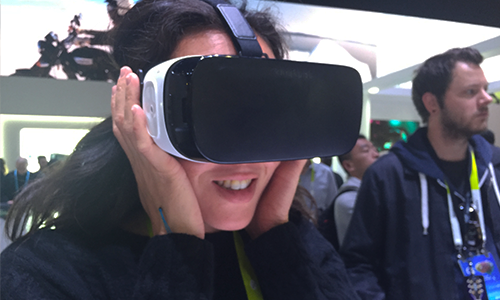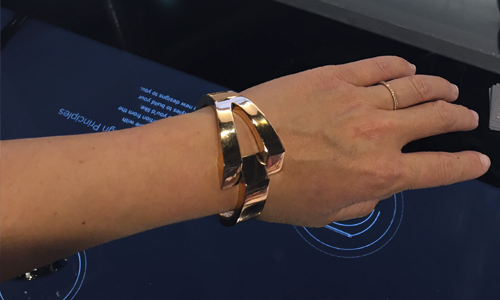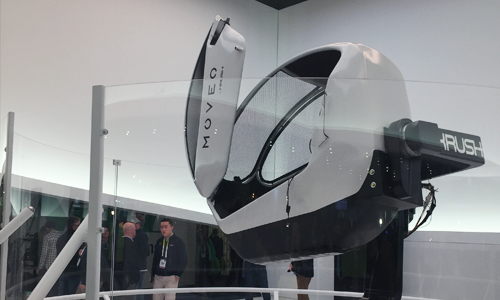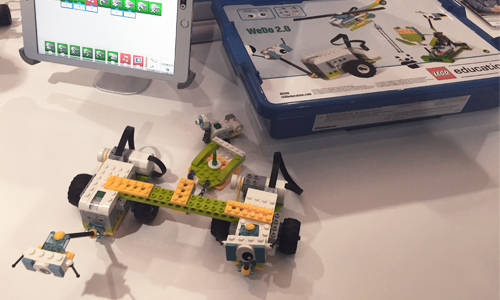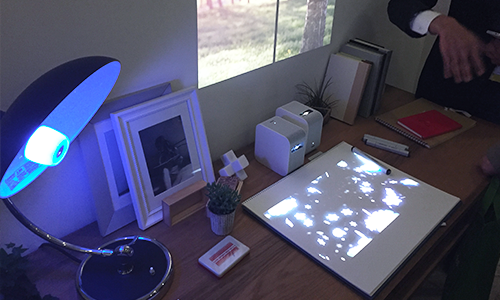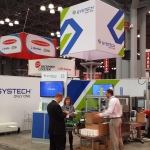Sights From The CES Showfloor: What Stood Out In A Marketer’s Eye
It’s been a week since 26FIVE witnessed the frenzied window into the future that is CES, and it’s time to make sense of the noisy hodgepodge of surreal electronic innovations. The 170,000+ attendees from across the globe, ourselves included, got to experience firsthand everything from animatronic tails and self-driving cars to emotive robots. Given that many of these hyped gadgets may be intriguing and fun to tamper with, only some of them will become relevant to marketers in 2016.
So what stood out?
Virtual Reality (VR) saw an enormous surge in enthusiasm and focus.
The experience of VR literally permeated throughout the whole show. Including the gaming industry, electronics companies from mobile to audio visual (AV) are dipping into the VR frenzy without hesitation, further fueling the evolution from merely telling stories to living them. An example of this is the Glyph headphones utilizing VR to give the attendees an immersive experience whilst they listen to a catchy tune. Stephanie Liu, our Director of Strategy, told about her experience listening to an opera while “being in” an extravagant theatre with an audience. We couldn’t help but ask:
How can marketers leverage the VR experience for brands?
Is it worth using VR for marketing? As it is with new technology, costs are rocket-high and VR still lacks user friendly platforms to share for everyday consumers.
Smart wearables flooded the show floor space.
Performance trackers and motion sensors performing different functions appeared in many forms such as clothing, shoes, lightweight straps and even jewelry. Although it seemed like many were doing the same thing and not really showcasing anything new, we were specifically impressed by the following:
ibody24: A device worn as a watch that acts as a personal trainer and provides pre-programmed workout systems. It gives advice on your posture and accuracy and can be played through your phone and TV.
Quell: A light device strapped to your calf that helps relieve chronic pain attributed to conditions like fibromyalgia and osteoarthritis. It works with sensory nerves that stimulate the brain to trigger natural responses and blocks pain signals throughout the body.
Wisewear: A line of smart jewelry that blends breakthrough technology with style providing activity tracking, mobile notifications and distress messaging. It even has a concealed safety function that allows women to send a distress signal to a pre-approved list of contacts with an optional geolocation recording of their surroundings.
It’s safe to say that luxury is tapping into the smart wearable trend. This is a smart move as many wearables are designed with masculinity and machine in mind, leaving behind style.
Drones… Uncertain but promising.
Already a common sight at big concerts and popular events such as Coachella and Burning Man, and occasionally flown by the common consumer. Apart from the dozens of standard-sized drones buzzing around CES, we saw a prototype for the first drone capable of carrying a human passenger. Made by a Chinese-based company, the Ehang 184 is a self-flying drone that can be fully charged in 2 hours, carry up to 220 lb. and fly you to work. This might be awe-inspiring and all but it won’t affect the masses for many more years.
We’ve seen the importance of drones to capture high-res imagery for filmmakers and photographers, but using drones as airborne sensors, opens up a whole field of untapped potential that could be used from farming to emergency situations.
Amazon’s drone delivery made headlines this year but we won’t be seeing drone deliveries anytime soon due to regulatory reform.
Schools are being targeted for toys that teach coding.
Millennials are becoming parents by the millions and they are bringing along a need for children’s products that combine learning, play and technology which is vastly changing how toys are being perceived as well as shaping buying habits and patterns. Lego Education revealed its new robot learning system, dubbed WeDo 2.0, to help teach kids about engineering, technology, and coding. The Lego Education WeDo 2.0 system is a combination of hardware and software that gives elementary school children more than 40 hours of hands-on projects. The lessons integrate coding into standard educational curriculum in subjects like physical sciences, life sciences, earth sciences, and engineering.
Smart home tech touted more indulgence than functionality.
Future smart home systems will give consumers many voice and app-activated options![]() for controlling lights, security cameras, thermostats, and other smart home devices. One such home device is the Samsung Family hub fridge which has a giant touchscreen built into one of its doors with an app that’ll notify the consumer when they are out of groceries and let the user/consumer control lights, thermostat, and other connected products right from the refrigerator door. Features like facial recognition and outdoor security were also very present. App-controlled kitchen products like rice cookers and coffeemakers abounded but these looked like solutions to problems that don’t exist.
for controlling lights, security cameras, thermostats, and other smart home devices. One such home device is the Samsung Family hub fridge which has a giant touchscreen built into one of its doors with an app that’ll notify the consumer when they are out of groceries and let the user/consumer control lights, thermostat, and other connected products right from the refrigerator door. Features like facial recognition and outdoor security were also very present. App-controlled kitchen products like rice cookers and coffeemakers abounded but these looked like solutions to problems that don’t exist.
Regardless, big brands are looking to disrupt the market, smart tech companies should look for partnership opportunities with these companies.
These innovations are aiming to make our busy lives more seamless and may be great for people with disabilities.
Given how expensive these new technologies are, is a talking refrigerator really necessary?




